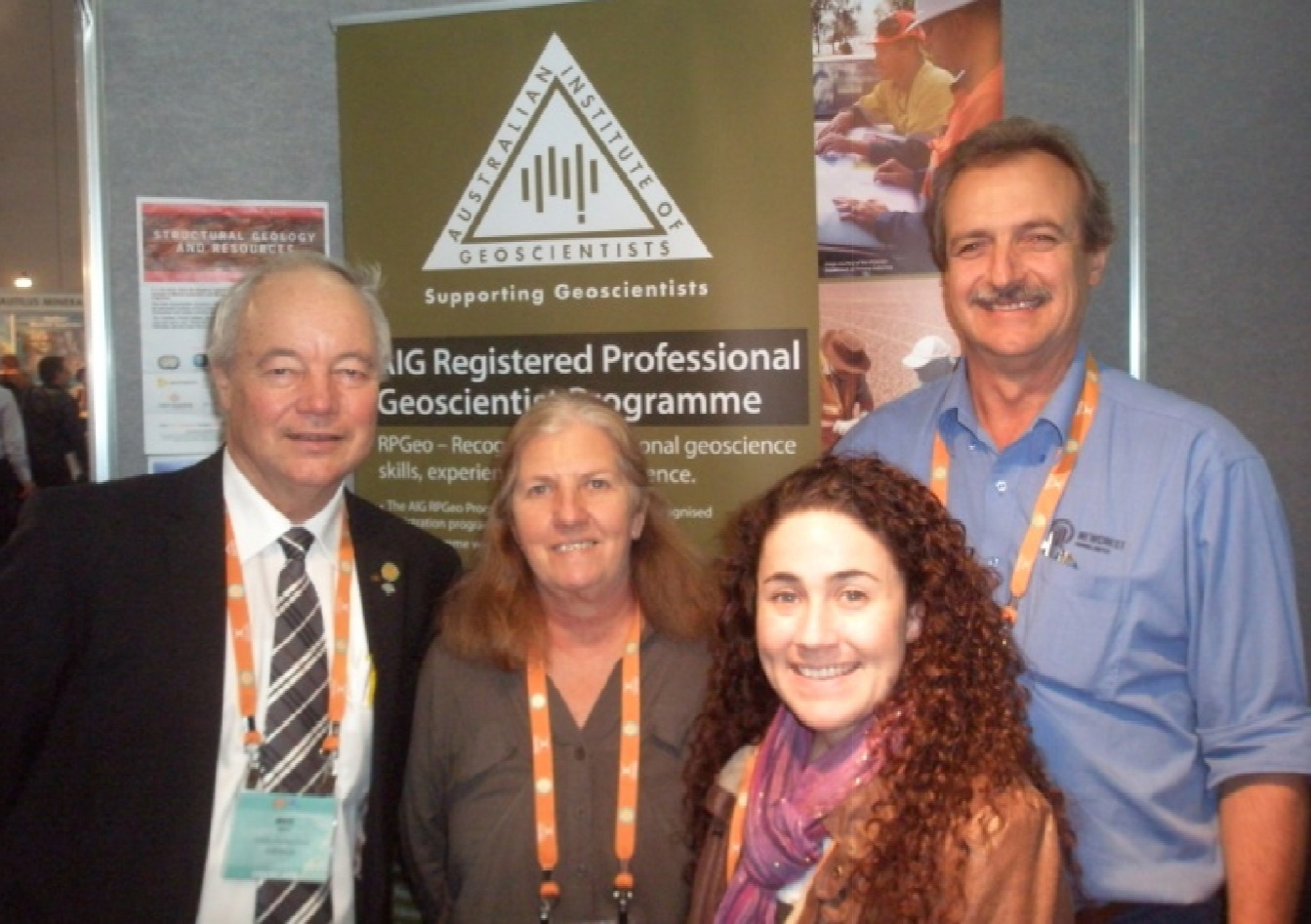The following article was written by Leeann Halley, a PhD student at the School of Environmental and Rural Science at the University of New England, Armidale NSW.
As a student, the thought of attending a huge International Conference in a field you are passionate about, is exciting, albeit a little daunting. The actuality of this IGC was different to what I had envisioned, and it was quite amazing.
It was obvious as you walked in the door that this was an event of extreme importance. The Brisbane Convention Centre is enormous and each day you entered with hundreds of others. The Opening Ceremony, in a large tiered theatre with thousands of people from all over the world, was equally exciting and I felt very privileged to be sponsored by the AIG.

Leeann (second from left) with Mike Smith (AGC Chairman), Emma Johnson (University of Newcastle) and Mike Erceg (AIG Councillor)
As a student of Cambrian palaeontology, I had thought that it may be difficult for me to find sessions from which I would gain useful knowledge for my PhD. But it is not really about this. So much of what I heard was useful for me as a student of palaeontology and palaeoecology in general, and for any future research and academic pursuits. The Proterozoic Earth sessions presented new evidence for a rise in oxygen levels at the Archaean/Proterozoic boundary and how this fitted with Proterozoic carbon levels. A Keynote Address by Jo Kirshvik proposing a possible magnetotactic origin for mitochondria at 2Ga, was so thought provoking — I had thought about how sediments and oxygen may be involved in our origins, but not magnetic mitochondria!
How could I possibly decide which were the most suitable and applicable symposia to attend? Even if you tried hard to stick to your own general theme, it was easy to get distracted by Antarctic evolution, the most recent climate change research or even the evolution of bilbies! The breadth and depth of the program was quite overwhelming and covered absolutely every facet of Geosciences. The first talk I attended was “The evolution of geological processes on the early Earth and their impact on the early biosphere” which was both stimulating and invigorating, encapsulating the excitement of the discoveries of our own origins and those of the planet.
I attended presentations on Ediacaran fauna, the Cambrian explosion, Cambrian chronostratigraphy, evolution of early Cambrian life, Neoproterozoic Earth, Ancient Reefs, possible stem-group animals between periods of ice and oxygen and an amazing presentation on the wonderfully preserved Chengjiang faunas. There was a very useful talk on agnostid morphology which was directly applicable to my PhD project. And finally, a real highlight, on the last day — Subduction of the Cambrian East Gondwanan margin. This has allowed me to communicate with another student to enhance both my and their studies by combining tectonics and palaeontology to (hopefully) better solve some problems at the East Gondwanan margin.
Between all of these sessions were the posters — hundreds of them. They were almost overwhelming for a student, because not only did you want to read the most relevant and up-to date information but also to think about how best to make your own poster for the next conference — colours, photos, headings, materials, etc.
The conference certainly achieved its aims for me. It enthused, excited and encouraged me as a scientist. The research was exciting and thought-provoking which just motivates one to make the best of their own research. It set up some valuable networks in my field, subjected me to the pros and cons of public speaking and broadened my horizons.
The overall theme, Unearthing our Past and Future- Resourcing Tomorrow, reflected the large role which the Geosciences play in meeting the needs of our rapidly changing society, managing our finite resources and playing a most vital role in our future.